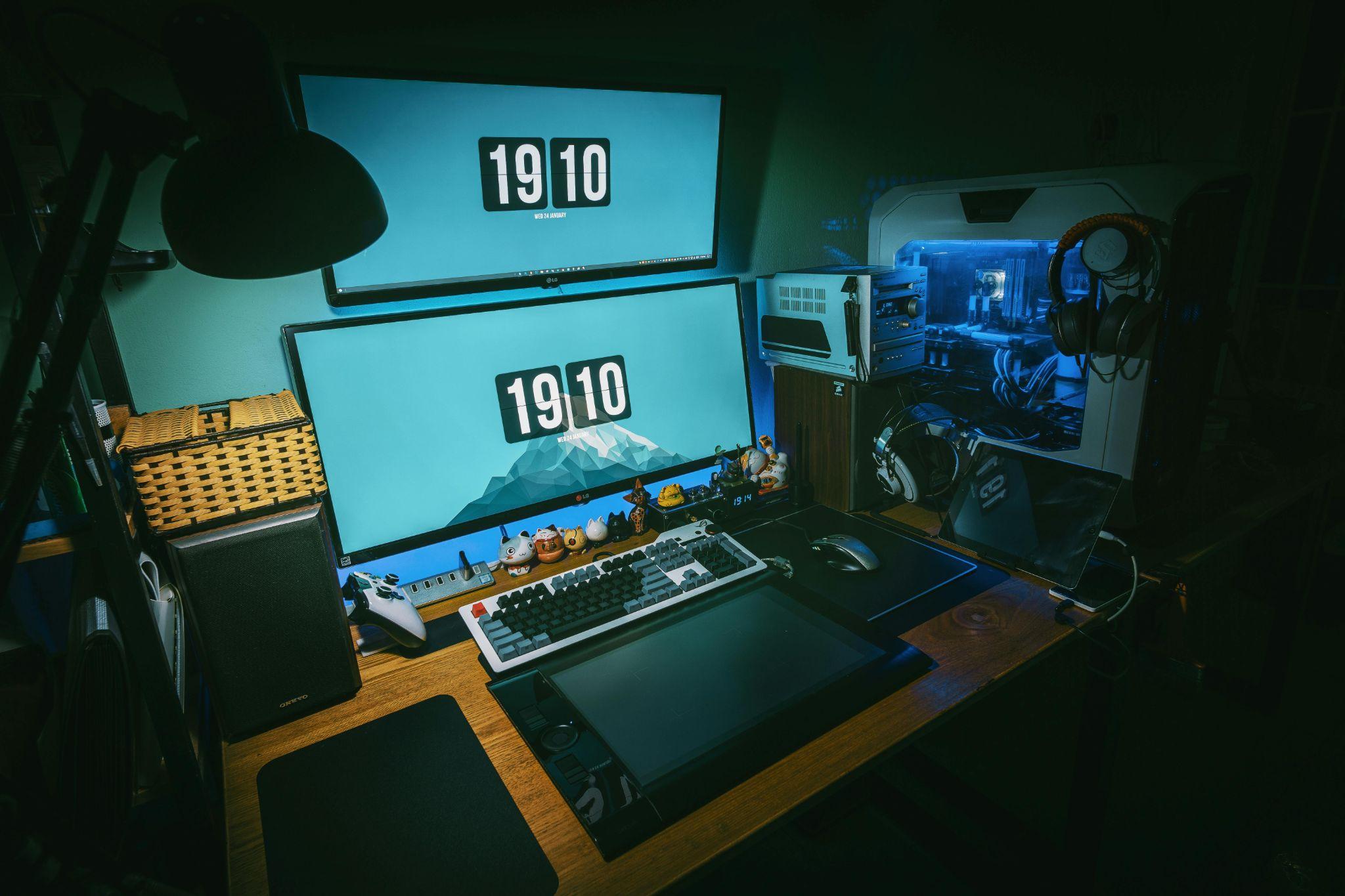
The Role of Artificial Intelligence in Modern Video Games
Iren
- 0
- 660
The gaming landscape has undergone a remarkable transformation over the past few decades, with artificial intelligence standing as one of the most influential driving forces behind this evolution. From the primitive algorithms that governed enemy movement in early arcade games to today’s sophisticated neural networks that generate dynamic worlds and lifelike characters, AI has fundamentally reshaped how games are created, played, and experienced. Modern video games leverage AI technologies not merely as background systems but as core components that enhance player immersion, gameplay complexity, and narrative depth. As computing power continues to increase and machine learning techniques become more refined, understanding AI’s multifaceted role in gaming provides crucial insight into both the current state and future trajectory of the industry.
Evolution of AI in Video Games
The history of AI in video games reflects a journey from simple deterministic systems to complex adaptive algorithms that continuously reshape the gaming experience.
Early Implementations of AI
The dawn of video game AI began with rudimentary pattern-based behaviors that created an illusion of intelligence through predictable yet engaging challenges:
- Pac-Man (1980) – Featured ghosts with distinct personalities and basic chase/scatter patterns
- Space Invaders (1978) – Employed simple movement patterns that increased in speed as players progressed
- Galaga (1981) – Introduced more complex attack formations and enemy behaviors
- Dragon Quest (1986) – Implemented basic decision trees for turn-based combat
- Wolfenstein 3D (1992) – Used simple raycasting for enemy awareness and navigation
These early implementations relied on finite state machines and basic if-then logic, with enemies following predetermined paths and responding to limited environmental triggers. While primitive by today’s standards, these systems established fundamental AI concepts that would evolve into increasingly sophisticated implementations.
Advancements in AI Techniques
The industry’s progression toward more complex AI systems marks a significant leap in creating believable virtual worlds:
| Time Period | Key AI Advancements | Notable Games | Impact |
|---|---|---|---|
| Late 1990s | Pathfinding algorithms | Age of Empires, Half-Life | Units navigate complex environments realistically |
| Early 2000s | Behavior trees | Halo: Combat Evolved, The Sims | NPCs demonstrate context-aware decisions |
| Mid 2000s | Goal-Oriented Action Planning | F.E.A.R., S.T.A.L.K.E.R. | Enemies coordinate and adapt to player tactics |
| 2010s | Machine learning integration | Forza Motorsport’s Drivatar, Shadow of Mordor’s Nemesis System | Systems learn from player behavior and adapt accordingly |
| 2020s | Deep learning neural networks | AI Dungeon, Ghostrunner 2 | Procedurally generated content and highly adaptive gameplay |
The landmark title F.E.A.R. (2005) revolutionized combat AI by implementing a system where enemies demonstrated tactical awareness—flanking players, communicating with squadmates, and responding dynamically to environmental changes. Players encountered opponents that appeared to think and collaborate rather than simply charging forward, establishing a new standard for enemy intelligence in first-person shooters.
According to research from the MIT Game Lab, these advancements have consistently followed a pattern where techniques developed in academic AI research typically take 5-10 years to be fully implemented in commercial games, demonstrating the complex relationship between theoretical AI advancement and practical gaming applications.
Enhancing Non-Player Character (NPC) Interactions
Modern games leverage advanced AI to create NPCs that feel less like scripted automatons and more like dynamic entities with believable behaviors and responses.
Adaptive NPC Behaviors
Today’s games feature NPCs capable of observing, learning from, and responding to player actions in sophisticated ways:
- Red Dead Redemption 2 employs a memory system where NPCs remember player interactions and modify their behavior accordingly
- The Last of Us Part II features enemies that communicate situational awareness, search for players strategically, and display emotional responses to comrades’ deaths
- Cyberpunk 2077 uses daily routines and dynamic responses to create a living city where NPCs react contextually to player actions
- Metro Exodus implements an ecosystem AI where different mutant species interact with each other and the environment independently of player presence
These systems employ utility-based AI that weighs multiple factors when determining appropriate actions, creating more nuanced behaviors that avoid the robotic predictability of earlier games.
Generative AI for Dialogue and Personalization
The integration of natural language processing and generative models has begun to transform how players communicate with virtual characters:
- AI Dungeon uses GPT technology to generate near-infinite narrative possibilities based on player input
- Star Citizen is implementing a system called “Subsumption” that generates contextual dialogue based on character traits and environmental factors
- NBA 2K series features commentary systems that reference player history and generate relevant, non-repetitive observations
- No Man’s Sky procedurally generates alien languages that players can learn through consistent interaction
Emerging technologies like embodied conversational agents are enabling more natural interactions with game characters, though challenges remain in maintaining coherent personalities and narrative consistency across extensive dialogue trees.
Procedural Content Generation

AI-driven content generation has revolutionized game development, allowing for expansive worlds and experiences that would be prohibitively expensive to create manually.
AI-Driven Level and Environment Design
Modern procedural generation techniques create vast, varied, and yet coherent game worlds:
- Minecraft generates near-infinite worlds with diverse biomes, cave systems, and structures
- The Binding of Isaac creates unique dungeon layouts with balanced enemy placement and reward distribution
- No Man’s Sky procedurally generates 18 quintillion planets with distinct ecosystems and lifeforms
- Diablo series produces randomized dungeons with appropriate difficulty scaling and reward distribution
Advanced techniques combine wave function collapse algorithms with machine learning to create environments that follow aesthetic and practical design principles rather than appearing randomly assembled. This approach enables smaller development teams to create expansive games that previously would have required massive studio resources.
Dynamic Sound and Music Generation
AI systems now adaptively generate audio elements that respond to gameplay circumstances:
| Audio Element | AI Implementation | In-Game Example |
|---|---|---|
| Adaptive Music | Transitional layering based on tension metrics | Doom Eternal’s combat intensity system |
| Procedural Sound Effects | Synthesizing unique sounds from component parts | Hellblade: Senua’s Sacrifice’s binaural audio |
| Dynamic Dialogue | Context-aware conversation generation | Fallout 4’s emergent NPC interactions |
| Environmental Audio | Algorithm-driven ambient sound generation | Death Stranding’s weather-responsive soundscapes |
Games like Ape Out demonstrate how these systems can create jazz-inspired procedural soundtracks that perfectly match the rhythm and intensity of gameplay, reinforcing the connection between player actions and audiovisual feedback.
Personalizing Player Experiences
AI-driven personalization creates tailored gaming experiences that adapt to individual player preferences and capabilities.
Real-Time Difficulty Adjustment
Dynamic difficulty systems monitor player performance and adjust challenges accordingly:
- Left 4 Dead’s AI Director – Modifies enemy spawns and item placement based on player stress and performance levels
- Resident Evil 4’s adaptive difficulty – Secretly adjusts enemy aggressiveness and damage output based on player success rate
- Mario Kart 8’s rubber-banding – Provides appropriate challenges regardless of player skill by adjusting AI racer capabilities
- XCOM 2’s adaptive mission generation – Creates missions with appropriate challenge levels based on squad composition and campaign progress
These systems aim to maintain players in what psychologists call a “flow state“—the optimal balance between frustration and boredom—by continuously adjusting the challenge level to match player skill development.
Personalized Content Recommendations
Games now analyze player behavior to suggest experiences that align with demonstrated preferences:
- Forza Horizon 5 suggests races and challenges based on previously enjoyed activities
- Assassin’s Creed Odyssey tracks quest completion patterns to highlight similar content
- Destiny 2 recommends activities based on playstyle and previous engagement patterns
- The Elder Scrolls Online directs players toward content that matches their preferred play patterns
These recommendation systems employ collaborative filtering algorithms similar to those used by streaming services, analyzing both individual behavior and patterns across the player population to make increasingly accurate suggestions.
AI in Game Development and Design

Beyond in-game applications, AI has transformed how games are created, tested, and refined throughout the development process.
Asset Creation and Optimization
AI tools accelerate the creation of game assets while maintaining quality and consistency:
- NVIDIA’s GameWorks uses AI to generate realistic physics simulations for water, fire, and destruction effects
- Artomatix employs neural networks to generate texture variations and extend existing textures
- Runway ML assists artists in creating concept art and visual designs through AI-augmented workflows
- Epic’s MetaHuman Creator leverages machine learning to generate photorealistic human characters
These tools serve as creative amplifiers rather than replacements, allowing artists to focus on creative direction while AI handles technical implementation and variation generation.
Testing and Quality Assurance
AI-driven testing has revolutionized the QA process in game development:
- Automated playtesting bots that simulate human play patterns to identify bugs and balance issues
- Crash prediction algorithms that analyze code changes to highlight potential stability issues
- Coverage optimization systems that ensure test cases explore the full range of game possibilities
- Player behavior models that simulate how actual users might interact with new features
Microsoft’s AirSim and Unity’s ML-Agents provide frameworks for developers to implement reinforcement learning for both testing and in-game AI development, significantly reducing the time required to identify and resolve issues before release.
Ethical Considerations and Industry Impact
The expansion of AI in gaming raises important questions about its implications for developers, players, and the broader industry.
Job Displacement and Creative Control
The automation of previously manual tasks creates tension between efficiency and employment:
- Character animation increasingly relies on motion synthesis AI rather than hand-crafted animations
- Level designers now often work alongside procedural generation systems rather than building everything manually
- Voice acting faces potential disruption from text-to-speech and voice synthesis technologies
- Writing teams contend with the capabilities of large language models for dialogue generation
Industry professionals increasingly emphasize the importance of human-AI collaboration models where artificial intelligence handles repetitive tasks while human creators maintain creative direction and quality control.
Data Privacy and Player Manipulation
As games collect more player data to fuel AI systems, ethical concerns emerge:
- Games track detailed behavioral data to improve AI systems, raising privacy concerns
- Dynamic difficulty adjustment systems can potentially be used to manipulate player spending in free-to-play games
- Predictive models might exploit player psychology to maximize engagement or monetization
- Transparency issues arise when players aren’t fully informed about how AI systems analyze their behavior
The industry continues to navigate these concerns, with some developers emphasizing transparency about AI implementation while others treat their algorithms as proprietary competitive advantages.
Conclusion
Artificial intelligence has evolved from a peripheral element of video game design to a central pillar that supports virtually every aspect of modern gaming. From the creation of dynamic, responsive worlds to the personalization of player experiences, AI technologies have expanded the possibilities of what games can achieve and how players can interact with virtual environments. As machine learning and neural network approaches continue to mature, we can anticipate even more sophisticated implementations that further blur the line between programmed behaviors and emergent intelligence.
The future relationship between AI and gaming will likely be defined by how effectively developers balance technological capabilities with human creativity, ethical considerations with innovative possibilities, and computational efficiency with meaningful player experiences. Far from replacing human ingenuity, AI in gaming appears positioned to amplify it—providing both developers and players with tools to explore new frontiers of interactive entertainment while addressing the complex questions that arise from increasingly intelligent virtual worlds.



